Discover the 15 Most Common Birds in Your Backyard
Let's discover the 15 most common backyard birds that North Americans can expect to see in their yards and on their feeders.
These birds can bring joy and a sense of wonder to our daily lives with their unique colors, morning songs, and interesting behaviors.
American Robin

The American Robin is a medium-sized songbird with a plump body and a long, thin beak.
It has a distinct orange-red breast, contrasting with a dark gray back and head.
Known for its melodious song, the American Robin is often seen hopping on lawns, searching for worms and insects.
Robins can be found in almost every backyard in North America. It's not uncommon for them to nest 2-3 times each season.
The American Robin is the state bird of Connecticut, Michigan, and Wisconsin.
Northern Cardinal
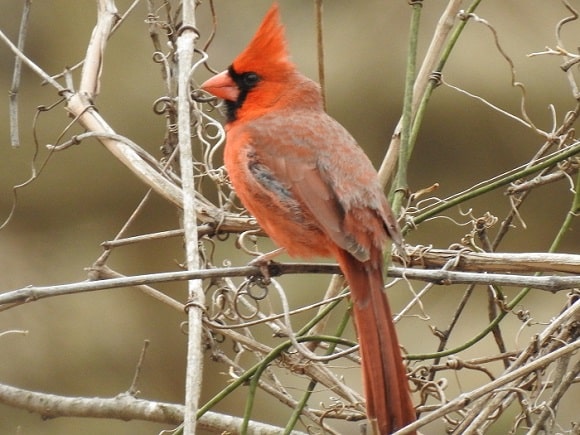
The Northern Cardinal is a striking bird known for its vibrant plumage.
The male cardinal boasts a brilliant red color all over its body, with a black face mask and a distinctive crest on the top of its head.
The female cardinal, although less colorful, still exhibits a reddish tint with a grayish-brown tone.
Cardinals have a thick, cone-shaped beak, ideal for cracking seeds and nuts.
They are known to be frequent visitors to bird feeders, and their loud, clear songs can often be heard in residential areas.
Cardinals eat seeds, fruits, and insects. They are common east of the Rockies.
The Northern Cardinal is the state bird of seven states, including Illinois, Indiana, Kentucky, North Carolina, Ohio, Virginia, and West Virginia.
Blue Jay
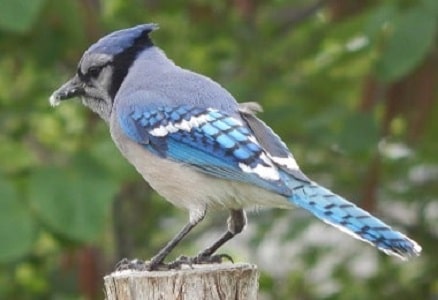
The Blue Jay is a striking bird with a combination of blue, white, and black feathers.
It has a crest on its head that it can raise or lower depending on its mood.
Blue Jays are opportunistic feeders and have a varied diet that includes nuts, seeds, insects, and even small vertebrates.
They are known to be quite vocal and often mimic the calls of other birds. Providing peanuts in the shell will get them to your feeders.
These intelligent birds are often seen in woodlands, parks, and suburban areas throughout North America.
Black-capped Chickadee
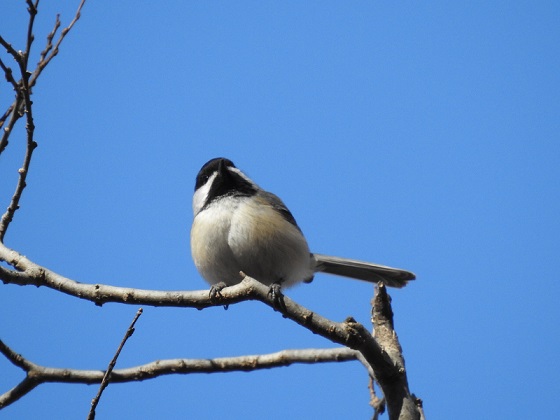
The Black-capped Chickadee is a small, lively bird with a plump body and a short neck.
It has a black cap and throat, with a white face and cheeks. Its back is gray, and its underparts are whitish-gray.
These birds are known for their cheerful and distinctive song, often described as a "chick-a-dee-dee-dee" call.
They are agile and acrobatic, capable of clinging upside down on tree branches. Chickadees eat insects, seeds, and berries.
They are known for their cheerful song and can be found in the northern half of North America.
They are cavity nesters and are common inhabitants of woodlands and suburban areas. They will nest in man-made birdhouses
Did you know that Chickadees have a remarkable memory and can remember the locations of thousands of food caches.
House Sparrow
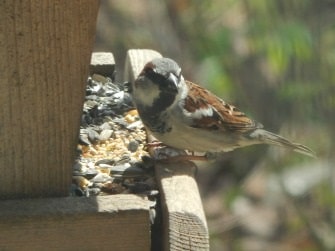
The House Sparrow is a small, stocky bird with a thick beak and a rounded head.
It has a brownish-gray plumage, with males having a black throat and chest, and females having a lighter buff color.
These birds are highly adaptable and can be found in a wide range of habitats, including urban areas, farmlands, and grasslands.
They are social birds and often gather in flocks. They are known for their chirping song and can be found in most of North America.
House Sparrows eat seeds, grains, and insects.
House Sparrows are not native to North America and were introduced from Europe in the 1850s.
Mourning Dove
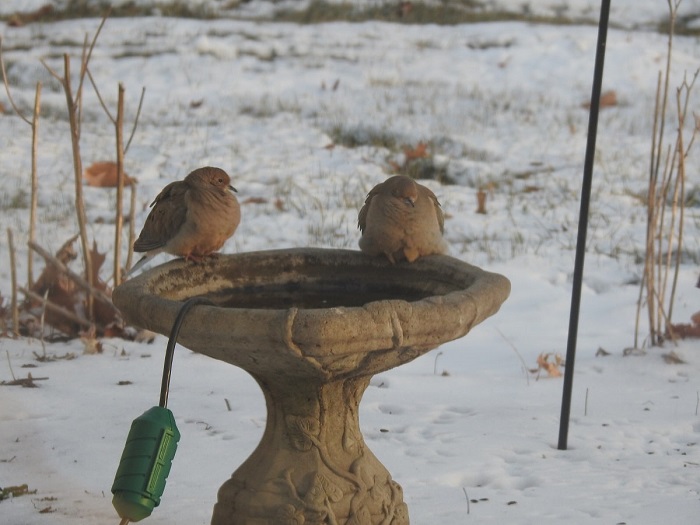
The Mourning Dove is a medium-sized bird with a sleek body and a small head.
It has a soft, light brown plumage with darker spots on its wings.
These doves are known for their gentle and mournful cooing sound, often described as "coo-oo, coo, coo."
They are frequent visitors to bird feeders and have a preference for seeds, grains, and small fruits.
Mourning Doves are ground feeders and can often be seen walking and foraging on the ground, using their beaks to pick up food.
They are widespread across North America, often found in open habitats such as fields, wood edges, and suburban areas.
Did you know that Mourning Doves are one of the most hunted birds in North America?
American Goldfinch
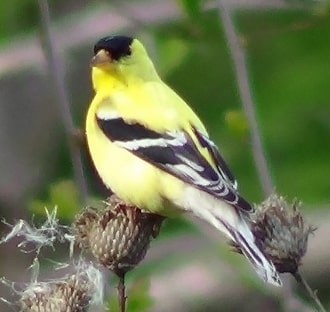
The American Goldfinch is a small, vibrant bird with a slender body and a conical beak.
During the breeding season, the male goldfinch displays a bright yellow plumage with black wings and a black cap.
In contrast, the female Goldfinch has a duller yellow-green coloration.
American Goldfinches are highly active and agile in flight, with a distinctive undulating pattern.
They primarily feed on seeds, especially those from thistles and other composite plants.
These birds are commonly found in meadows, gardens, and open habitats across North America.
Nyjer seed is a favorite of the American Goldfinch. This the state bird of New Jersey and Iowa.
Red-winged Blackbird
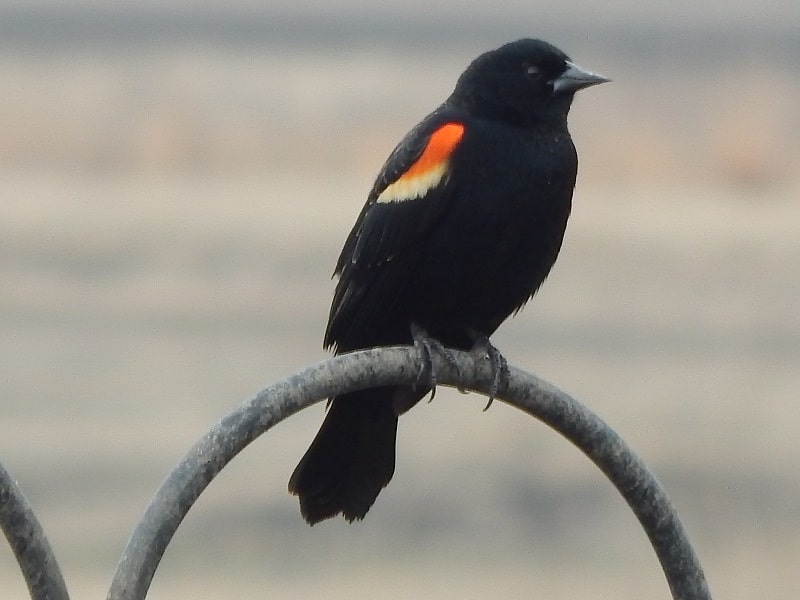
The Red-winged Blackbird is a medium-sized songbird with a sleek, black body and distinctive red and yellow shoulder patches, called epaulets, on males.
Females have a streaked brown appearance with lighter underparts.
They are known for their loud and distinctive song, a series of raspy, conk-la-ree notes.
These birds inhabit marshes, wetlands, and grassy areas, where they forage for insects, seeds, and small aquatic creatures.
They are territorial birds and often perch prominently on cattails or other tall vegetation to defend their nesting territories.
Downy Woodpecker
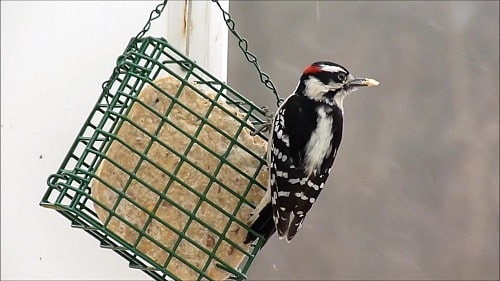
The Downy Woodpecker is a small woodpecker with a compact body and a short, chisel-like beak.
It has black and white plumage, with a white belly, black wings with white spots, and a white stripe running down its back.
These birds are adept climbers and can often be seen hopping up and down tree trunks in search of insects and larvae.
They also feed on seeds, berries, and suet at feeders.
Downy Woodpeckers have a distinctive drumming pattern, used for communication and territorial defense.
They are common residents of woodlands, parks, and suburban areas across North America.
Downy Woodpeckers have a special tongue that can reach deep into crevices to extract insects.
European Starling

The European Starling is a medium-sized bird with a stocky build and a pointed beak.
It has glossy black feathers with a purple or green sheen, and during the breeding season, adults develop distinctive white spots.
They are highly gregarious birds and can be seen in large flocks, particularly during migration.
European Starlings are skilled mimics and can imitate various sounds, including human speech and other bird songs.
Their diet consists of insects, berries, fruits, and seeds. They are cavity nesters and often compete with native bird species for nesting sites.
European Starlings were introduced to North America in the 1890s and have since become one of the most common birds on the continent.
White-breasted Nuthatch
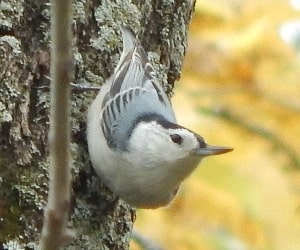
The White-breasted Nuthatch is a small bird with a blue-gray back and a white belly.
They are known for their distinctive call and can be found in most of North America. White-breasted Nuthatches eat insects and seeds.
In winter, White-breasted nuthatches can be attracted to bird feeders with sunflower seed or suet.
They may begin their mating and courtship rituals as early as January.
Did you know that White-breasted Nuthatches are one of the few birds that can walk headfirst down trees?
American Crow
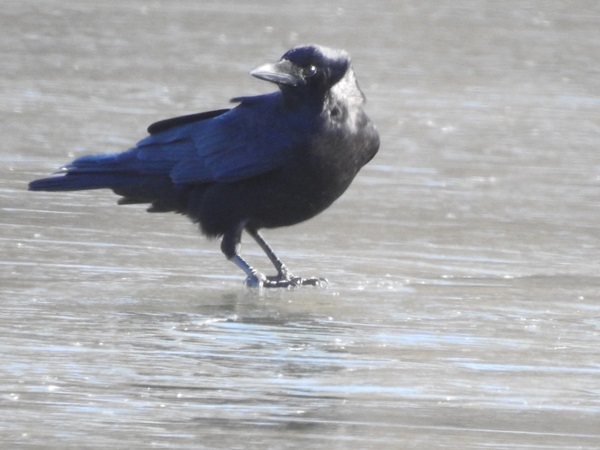
The American Crow is a large, all-black bird known for its glossy feathers and robust build.
It measures around 17-21 inches in length and has a wingspan of approximately 33-39 inches, making it one of the larger songbirds.
Crows have thick, sturdy beaks and strong legs for perching and walking.
They are highly intelligent and adaptable birds, often seen in both urban and rural environments.
Crows are scavengers and omnivores, feeding on a wide range of food, including carrion, insects, small animals, seeds, and fruits.
They have a loud cawing call and are known for their communal behavior, often gathering in large groups.
American Crows are highly intelligent and can recognize individual human faces.
Common Grackle
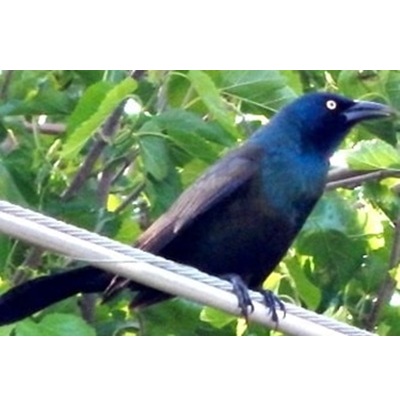
The Common Grackle is a large, iridescent blackbird with a long, keel-shaped tail and a sturdy beak.
It has a glossy black plumage that appears purple or green in certain lighting conditions.
Males have bright yellow eyes, while females have dark brown eyes.
These birds are highly social and often gather in large flocks, creating a cacophony of creaking and squeaking calls.
Common Grackles are opportunistic omnivores and feed on a wide range of food including insects, fruits, and seeds.
Tufted Titmouse
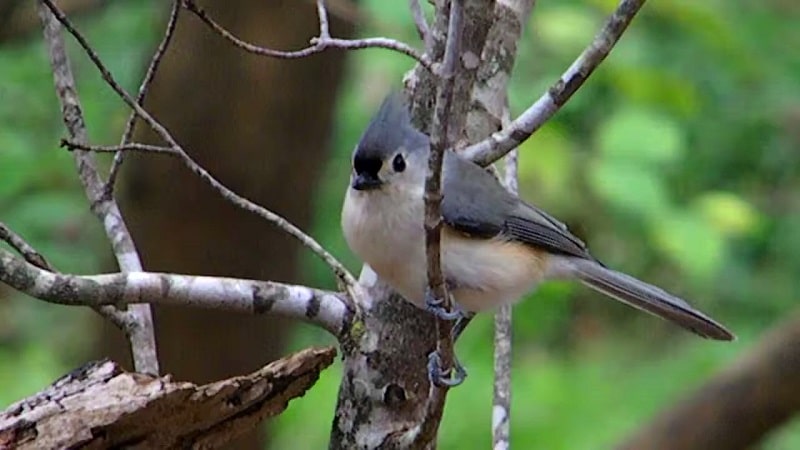
The Tufted Titmouse is a small songbird with a compact body and a short, stout beak.
It has a gray upper body, a white front, and a prominent crest on the top of its head.
These birds are known for their inquisitive nature and can often be seen foraging in trees and shrubs.
They feed on a varied diet that includes insects, seeds, berries, and nuts.
Tufted Titmice are vocal birds with a range of whistling and calling sounds, including a clear "peter-peter-peter" song.
They are common residents of woodlands and suburban areas in the eastern and southern parts of the United States.
Tufted Titmice are cavity nesters and will use old woodpecker holes or nest boxes.
House Finch
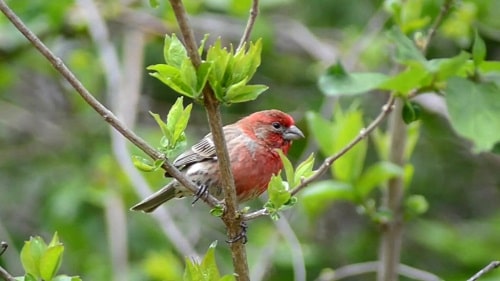
The House Finch is a small songbird with a compact body and a short, conical beak.
It has a brownish-gray back and a streaked breast.
The males display a vibrant red or orange coloration on their heads, breast, and rump.
Females have a more subdued coloration with streaked patterns.
They are highly adaptable birds and can be found in a variety of habitats, including urban areas, gardens, and shrublands.
House Finches primarily feed on seeds, fruits, and small insects.
They have a varied song, consisting of warbles, trills, and short phrases.
House Finches were introduced to North America from the western United States in the 1940s.
Common Backyard Birds Conclusion
So there you have it, the 15 most common birds found in North American backyards.
Each of these birds has its unique characteristics that make them a joy to watch and listen to.
Once you begin watching the birds in your backyard, you'll discover even more than just these 15 species.
Start today and begin making a list of the birds in your yard and discover just how many there really are!
Here is our list of the 60 most common North American Birds!
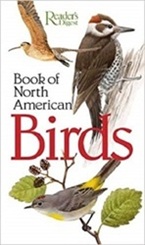
|
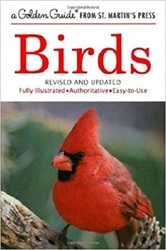
|
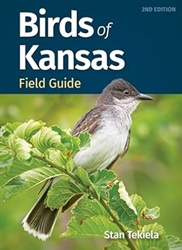
|
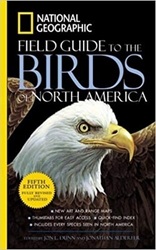
|
| Readers Digest Guide | Golden Guide | Your State Only | Nat-Geo Guide |





